A replacement for the Type 60 APC
Basically when the Type 60 just entered service its replacement was already planned for the long term. However waiting for the return of experience, specifications were only issued in January 1967 y the Japanese Defense Agency's Technical Research and Development. Mitsubishi Heavy Industries, already responsible for the Type 74 main battle tank would take charge of the final vehicle development on a promising new aluminum alloy chassis, which shared many of its components with the MBT. Among the original requirements were the maximum speed of over 60 km/h, aluminum hull, amphibious capabilities, and carrying capacity of 12 men in total. Added to this, the crew was to be able to fire its small arms while on the move, and the main armament was to comprise a 20 mm cannon, in addition to the usual cal.50 and bow-mounted cal.30.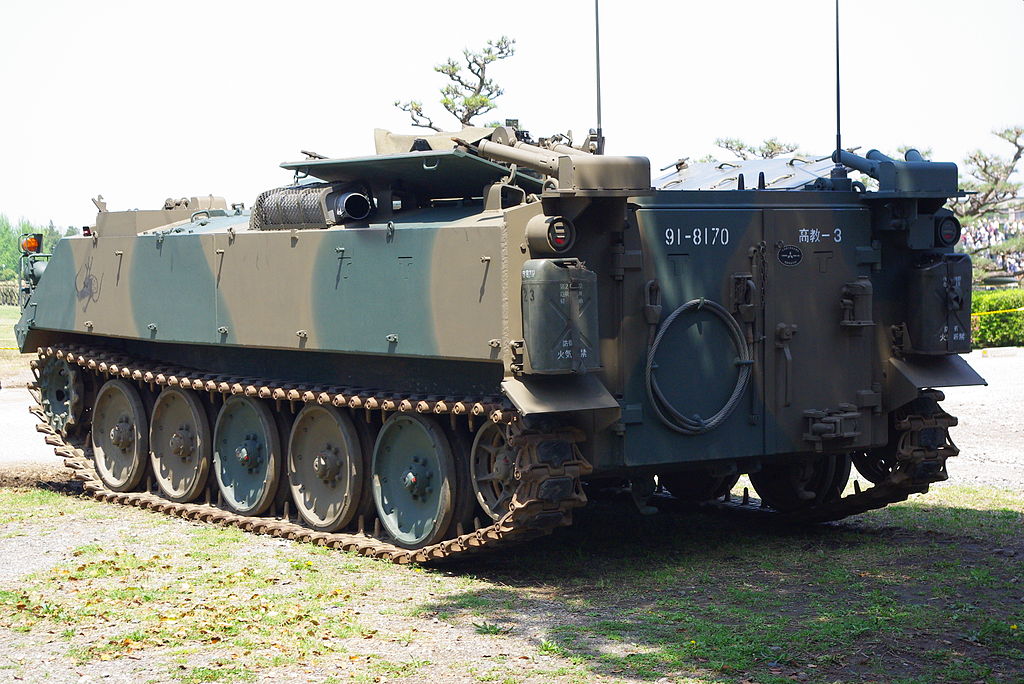
Type 73 APC, rear view
Development
Suppliers and parts manufacturers were gathered in 1967, Hitachi Manufacturing Company for the transmission, Kobe Iron Works for the aluminium alloy hull, Komatsu Manufacturing Company for the tracks, Nihon Electric Corporation for the night vision devices, and Mitsubishi Heavy Industries for the engine, steering and suspension (and final assembly). A first automotive rig, the SUT was tested in 1968 and later both Komatsu and Mitsubishi both delivered a prototype for further testings. Komatsu's one was built in steel and cheaper. This was to prove the validity of aluminium alloy for the required specifications, as Mitsubishi's model was selected in December 1972. After further modifications it was adopted and standardized as the Type 73.Design
The Type 73's hull is entirely made of aluminium alloy, thickness is classified but is believed to give sufficient protection all around against small arms fire and shell splinters, while the sloped glacis nose is able to withstand heavy MG rounds hits. The driver is located to the right hand side, with his own sliding hatch, three day sights (central IR device) and infra-red driving lights, while the bow gunner is seated to his left. Behind were located, respectively, the commander and gunner hatches. The commander's one is given six day vision blocks for peripheral vision. The gunner is part of the squad of 9.The engine is located in a left transverse mid-position which is unique among APCs, and is designed to be removed easily as a single unit in the field. Both air intake and exhaust are located on the top of the vehicle. The 20mm autocannon project was never realized, and the usual cal.50 was kept. But the gunner's cupola can traverse a full 360° with also 60° elevation while the bow's MG has only a limited traverse/elevation of 30° covering the frontal arc at max 500m range. For concealment, two banks of three electric smoke dischargers are fitted at the rear of the vehicle. The rear compartment carries the eight equipped infantry on folding seats on each side, with rear exit doors, and through four small T-shaped pistol ports. Large hatches are also located in the roof. There is a collective NBC protection also.
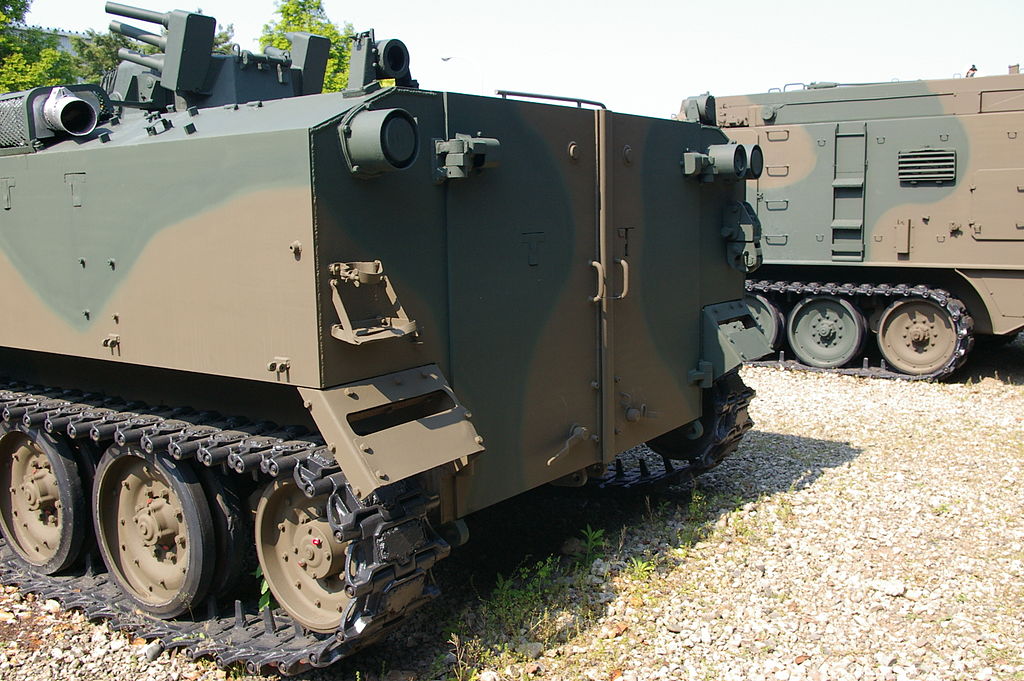
Type 73 APC, closeup of the rear doors, T-shaped pistol ports, smoke dischargers, doors and fuel jerry can lockers.
For mobility, the Type 73 is able to reach 70 kph on road thanks to its Mitsubishi 4ZF air-cooled V-type 4-cylinder diesel which develops 300 horsepower (300 PS). However the Type 73 requires a kit to become fully amphibious (including a large two-parts trim vane with windows), activating pumps, etc. and is able to swim, propelled in the water by its tracks at a maximum speed of 7 kilometres per hour (4.3 mph). The drivetrain consists of five dual rubber-tyred road wheels either side (no return rollers) with the drive sprocket at the front and the idler at the rear. Torsion bar units are fitted, with hydraulic shock-absorbers on the first roadwheel units.
Variants
-Type 73 command version (raised rear compartment, map tables, extra radio/comsat and navigation equipments). -Type 74 105 mm Self-propelled howitzer. -Type 75 130 mm Multiple Rocket Launcher (MLRS) (derivative) -Type 75 wind measurement vehicle (derivative)The Type 73 active service
Like most cold war Japanese AFVs, the Type 73 (73式装甲車 nana-san-shiki-soukou-sya), which is still in service as of today, rarely left the home Islands but for overseas exercises. As planned, the vehicle is equipping mechanized units of the Army and Marine. Total production figures varying wildly. The maximum figure is 340, the most generally accepted is 338. As of 2001, Japan reported to the United Nations Office for Disarmament Affairs that 337 Type 73s were in service. This figure is maintained for 2013. Its replacement, the new Type 89 IFV is produced only on small quantities and not ready to replace it soon, so there is no end service schedule planned yet.Links
The type 73 on wikipedia On military-factory.com
Type 73 specifications |
|
| Dimensions | 5.8 x2.8 x2.2 m (19 x9.2 x16 ft) |
| Total weight, battle ready | 13.3 tons |
| Crew | 3+9 (driver, commander, gunner, 9 infantry) |
| Propulsion | Mitsubishi 4ZF ac V4 diesel 300 hp (300 PS) |
| Suspension | Torsion bars & shock absorbers |
| Speed (road) | 70 km/h (43 mph) |
| Range | 300 km (190 mi) |
| Armament | 12.7mm M2HB HMG, M1919A4 8mm LMG bow |
| Armor | 13mm max frontal arc |
| Total production | 338 in 1973-80 |
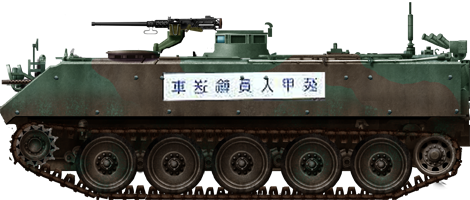
Type 73 APC in the regular two-tone livery.
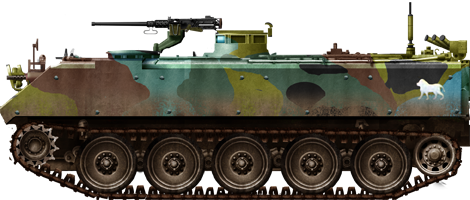
Camouflaged Type 73 in a complicated exercize 5-tons pattern
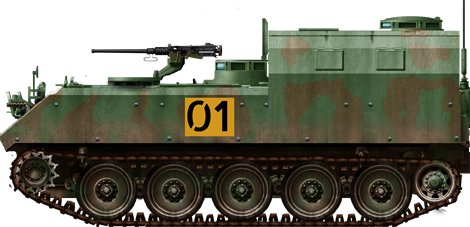
Type 73 command tank variant.
Gallery
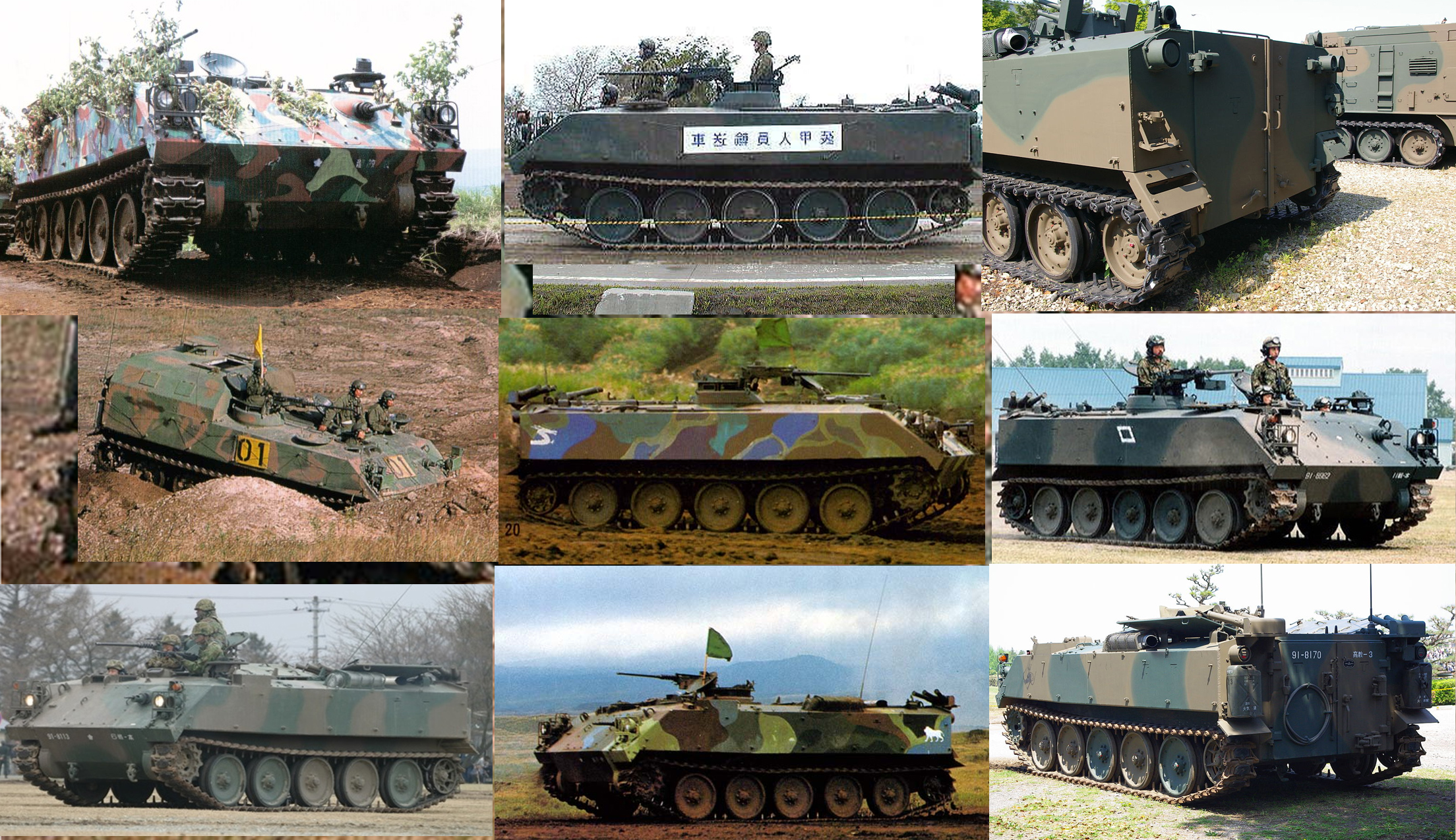
Various references from the web
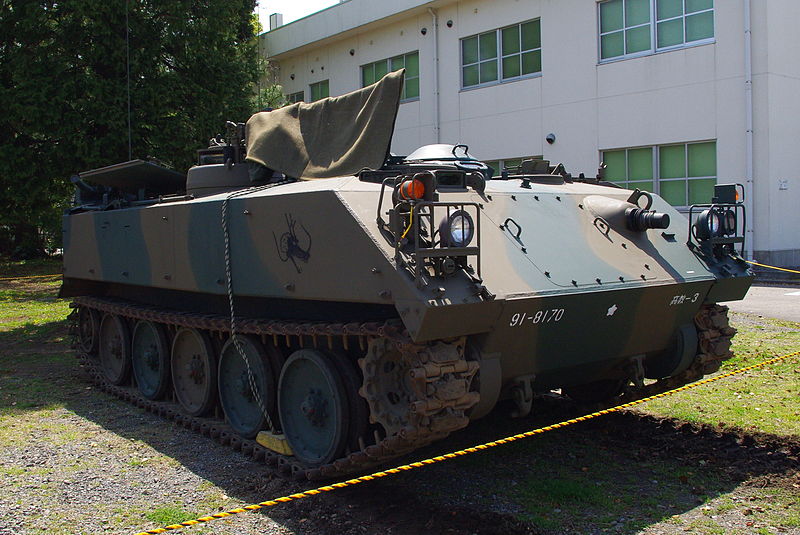
Front view
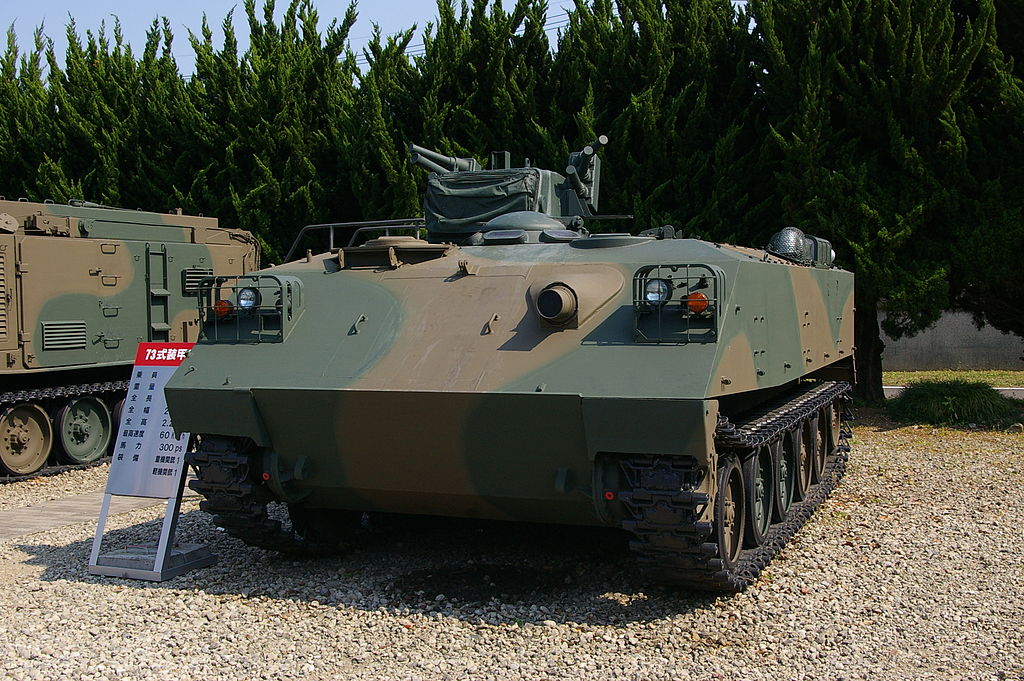
Front view

Cold War Tanks


































Cold war tanks posters

Cold War Main Battle Tanks

Cold War Soviet Army
Museums, Movies, Books & Games
The Tanks and Armor in pop culture
Tanks and armored vehicles in general are only really grasped when seen first person: The mass, the scale, it's all there. Explore also the way tanks were covered in the movie industry, in books and in video games.Movies:
Best tanks movie on warhistoryonline.com
On imdb.com
On bestsimilar.com/
miltours.com
liveabout.com/
watchmojo.com
Video Games:
pcgamesn.com
historyhit.com
levvvel.com
vg247.com/best-tank-games
mmobomb.com/
alienwarearena.com

